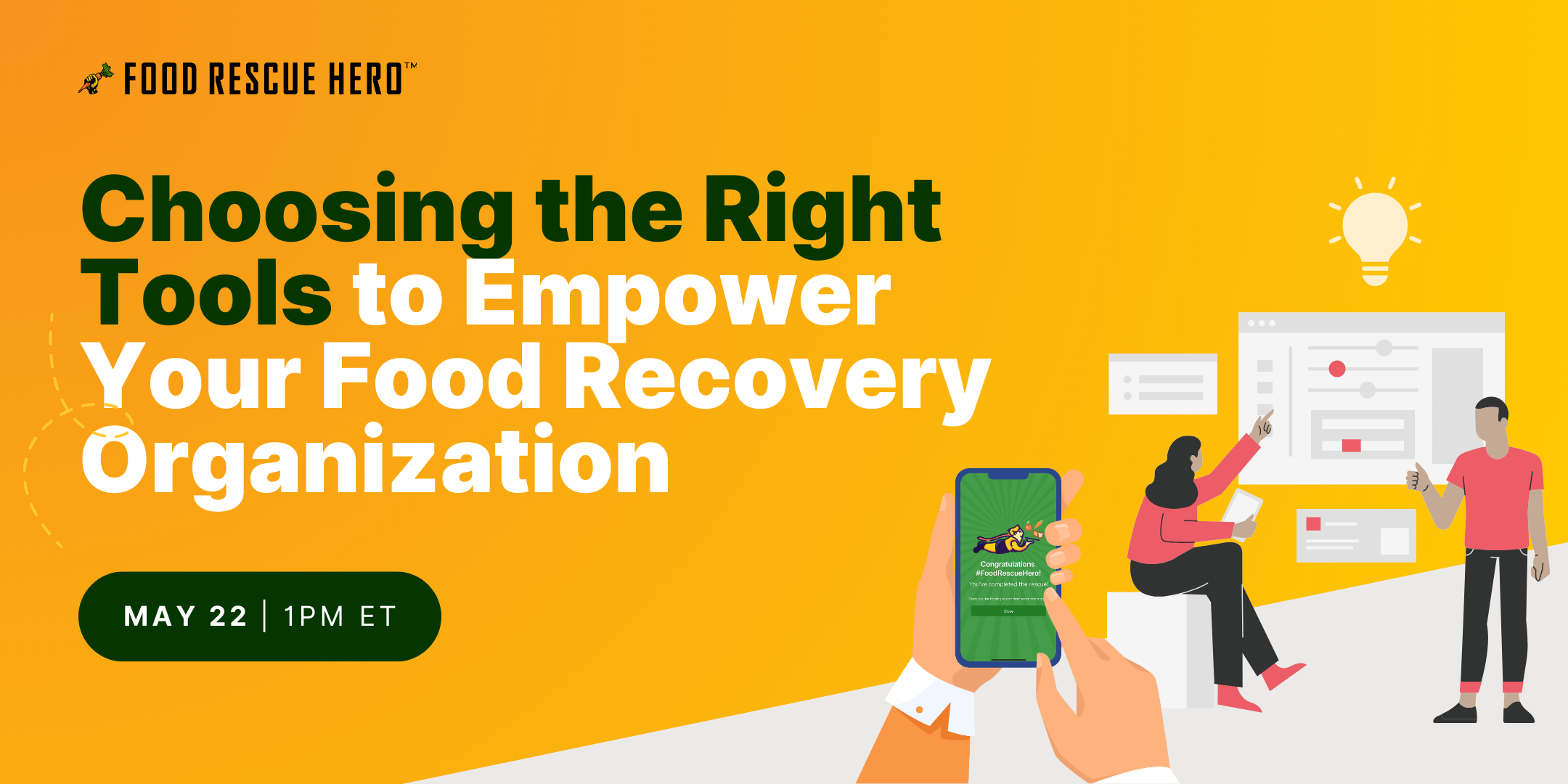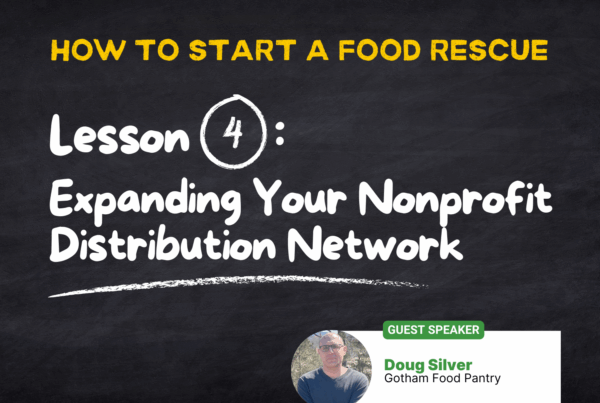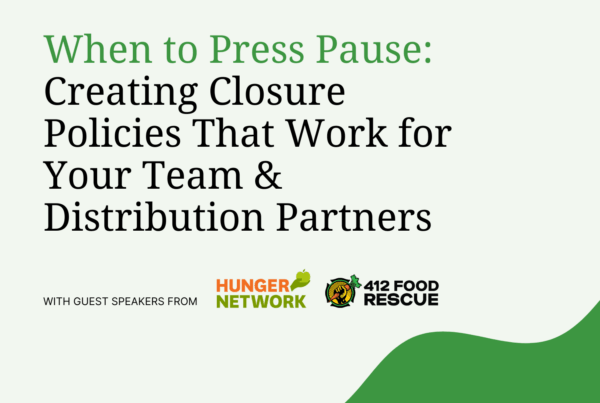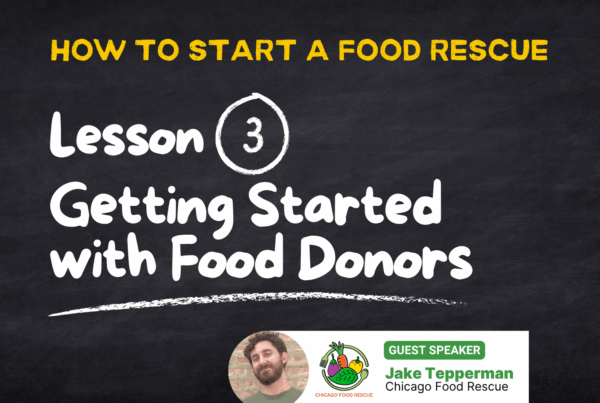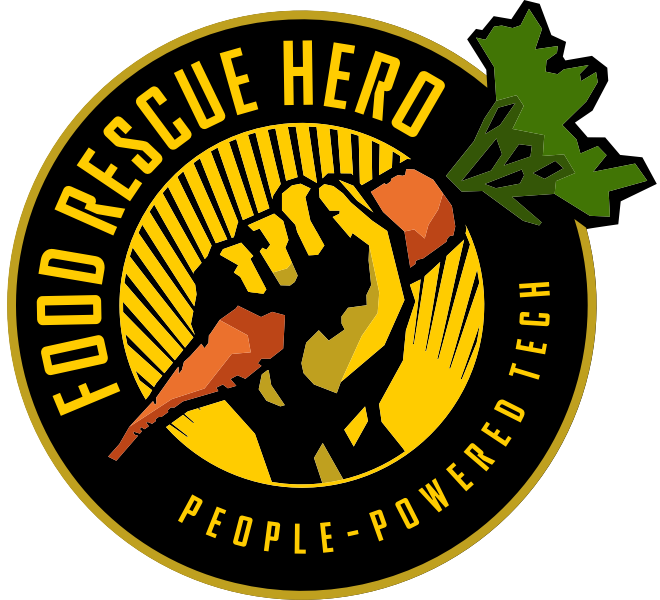Selecting the appropriate tools for a food recovery organization is crucial to reflect and support your values, facilitating growth and impact in your community.
There are dozens of tools out there for food recovery organizations. But how do you choose the right one for your org?
In our May webinar, we focused on how food recovery organizations can use a product development lens to evaluate which tools are best suited for their unique goals and growth aspirations.
Watch our May 2024 webinar:
"Choosing the Right Tools to Empower Your Food Recovery Organization"
Case Study: 412 Food Rescue
When 412 Food Rescue started in Pittsburgh, PA in 2015, rescue details were communicated manually via social media, email, and text. The process allowed the organization to make an immediate impact within the community, but better tools were needed to scale.
412 Food Rescue worked with a local university to build a “free” app, but ended up spending a lot of money and time in subsequent years to optimize the app to support all of the nuanced needs of an a growing food recovery organization. The resulting product, Food Rescue Hero, is now used by 17 food rescue organizations across the United States.
Evaluation
Brad Fetchin, Vice President of Product at Food Rescue Hero, emphasizes a proactive, structured, process-oriented product development to help food recovery organizations scale properly. Knowing the right questions to ask in the evaluation process will help organizations discover tools that best align with their mission, vision, and values:
- Identify the problem/s: Start by identifying the specific problems your organization faces.
- Leverage expertise: Utilize your expertise to find efficient and effective ways to manage resources.
Choose tools that align with your long-term growth plans and organizational goals. For passion projects with limited-scale ambitions, tools are available that require minimal investment while still making an impact. The goal is to ensure that the tools you select will enhance your values vs. clashing with them.
When Food Rescue Hero receives a feature request, our team asks the following questions to determine which features make sense for our product:
- Vision: How do we fold this feature into a larger product theme story? Themes are key focus areas that are evergreen. Each new feature should improve and build upon the product.
- Roadmap: Does a product theme truly need time invested at the moment? It may be a great product area to focus on someday, but is now the right time? Objectively prioritize product improvements.
- Value: How can we amplify impact in the product themes that are timely?
- Objective: How can we use a simple decision tree to objectively prioritize features (given other items currently on our radar)?
- Realize: How quickly/predictably can we ship this alongside a high-quality release?
This extrapolates to how nonprofits should think when investing in tools, programs, and even employees. You might get a funding opportunity that’s exciting, but it could be so far afield from your organizational goals that it will derail you. Always consider how potential tools fit into your larger theme? Will this help your impact as an organization? And, is now the right time?
What questions should Food Recovery organizations ask when looking for tools?
- What and where are your operational bottlenecks?
- What tool could provide the most cost benefit to your organization?
- Which stakeholders and audiences do you need to serve? Employees, donors, volunteers and recipients all have different needs.
- What are your aspirations and which tool will get you there?
- What are your organizational values?
How do you decide between a homegrown solution vs. existing, industry-specific tools?
- Domain Knowledge: Is the team who built your tool a peer food recovery organization?
- Peer Interests: Do they and you share common interests and values?
- Substance: What is your appetite for a tool to have ongoing enhancements?
- Overhead: Would you benefit from an end-to-end platform that optimizes your work?
- Scale: Do you prefer a manual tool with additional full-tie staff, or one that provides automation?
- User Group: Is it important for you to have influence over future product roadmap and enhancements?
Many existing third-party solutions are MacGyver’d to fit food rescue organizations because that’s what was available – but these solutions won’t evolve in the *food recovery space* without YOU pushing forward and doing the work. With the emergence of more food recovery industry-specific tools, organizations have tooling options that are more fit to their specific purpose. When choosing tools, consider the long-term implications for how this tool will specifically evolve to your organizational needs over time.
Red Flags: Cause for Pause
- Platforms that are “black box” may seem like a good solution because they’re low-touch, but you won’t have much influence on the product roadmap.
- Platforms that are perpetually “low/no investment” may lead to a need to replatform if you exceed the value the free platform can provide.
- A local software developer will build one for “free” can cost you lots of money down the road. 412 FR’s first app was free, then we spent $1M on further development and maintenance.
- Platforms that beholden you to a proprietary network (of either food donors or NPPs) will limit your ability to scale.
- Platforms that will limit your food rescue organization’s growth potential
When choosing tools to support your food rescue organization, plan for where you’d ultimately like to grow your organization and select a tool that will help get you there. It’s much easier to implement the right tool first. As an industry, we all need to consider how to make the best investment of our time and money to grow the impact of the food recovery industry.


